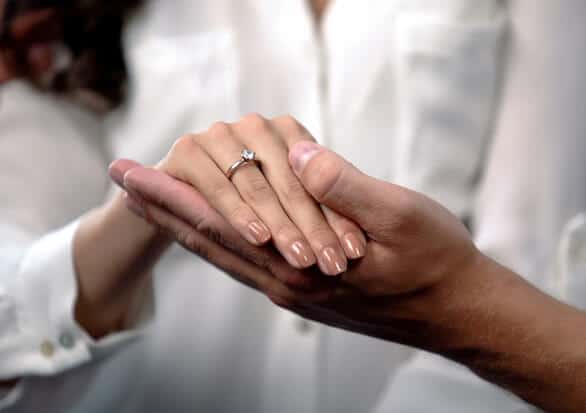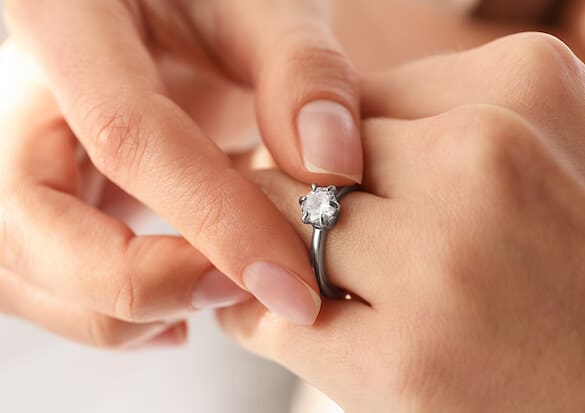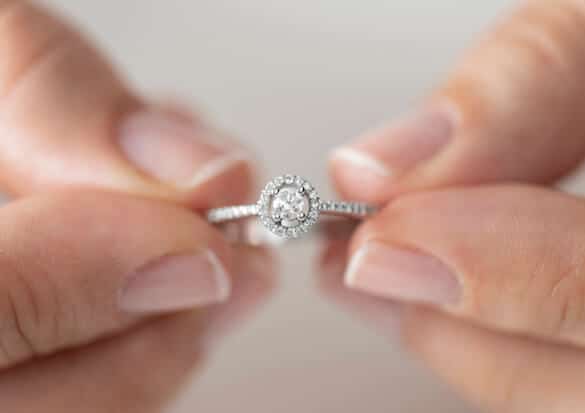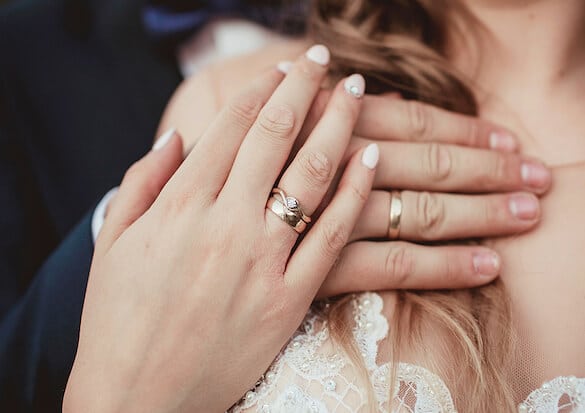The Complete Guide to Diamond Settings
Posted on
One of the overlooked attributes that many failed to notice when shopping for an engagement ring is its setting. Whilst scintillating and brilliant stone may account for up to 90 per cent of the cost of the ring, its setting is the vital attribute that not only defines the ring’s design, but also displays the stone’s best facets.
With the multitude of designs and gems to think about, a ring setting is another consideration that can make shopping all the more overwhelming. Lucky for you, we’ve gathered some of the prominent ring settings so that you can be one step closer to attaining the perfect ring.

Prong Setting
As one of the most popular settings in the market, the prone setting is marked by claws that hold the gem firmly in a metal “head”. Depending on the gemstone and your preference, you can opt anywhere from 3 to 6 claws, with 4 and 6 claws being the more conventional options. Regardless of the number of claws you wish to include in the design, your gem will be propped up to allow maximum light exposure from all angles. This translates to accentuating and maximising the brilliance of your gem.
The prong setting is excellent for holding even the most fragile gems securely in place, with the 6 prong setting being the best. However, do take note that to compensate for a more secure hold, a 6 prong setting can also overwhelm a smaller stone; so be sure to that into consideration.
As with many things, this prong setting also comes with its fair share of disadvantages. Since most of the outer perimeter of the gem is exposed, this also means that it can brush against other surfaces, making it more vulnerable to scratches (if you’re opting for a soft stone).

Pave Setting
From the French word for “paved”, the pave setting displays not just a centre stone, but also tiny ones across the surface of the metal band. This results in a sparkly shank, one that gives your ring the added shine. It also provides the illusion that the diamonds are bigger than they actually are.
As gorgeous as it is, this setting comes with the minimal risk of losing stones. It is, therefore, not recommended for those who have an active lifestyle or have a lifestyle that requires a lot of handwork. Sizing and resizing can also be rather challenging, especially if the pave is set around the full metal band.
Halo Setting
Similar to the pave setting, the halo setting typically displays a centre stone that is encircled by a pave of smaller accent stones. Since it adds to the appearance of the centre stone, the setting will give the illusion that the stone is bigger than what it truly is. Instead of breaking the bank over how much a one carat diamond ring costs, you can simply obtain a smaller stone and add accent stones. This approach is arguably less expensive than an entirely bigger stone and you’re guaranteed more sparkle for every dollar!
That said, there are a few considerations you will want to take note of. Depending on how big your centre stone is and how elaborate you’d want the halo to be, the halo setting can easily make your ring look and feel bulky. This will take away the elegance and flair of the ring, making it look too ostentatious.
Similar to the paved setting, this ring setting is not recommended for those who have an active lifestyle or those who regularly work with their hands. Resizing will also pose a problem, if there are a significant number of side stones that are set along the band.

Bezel Setting
A popular choice amongst those who fancy a modern and stylistic finish, the bezel setting encircles a centre stone with a custom-made metal rim to hold it tightly in place. As opposed to the prong setting, the durability of a bezel setting makes it an ideal ring setting for those who have an active lifestyle.
You can also opt for a partial setting if you’re opposed to a full setting. This will leave the sides of the stone open, giving it adequate protection for the stone whilst preventing snagging on clothing and other materials.
Keep in mind that this setting has the tendency to hide more of the stone than other ring settings. Since there is less light exposure, your gem will achieve less light reflection and brilliance.
Other Considerations To Take Note Of
When shopping for a stunning engagement ring, you’ll want to consider the addition of a wedding band. Think about the prospect of stacking the two bands together on your ring finger, a tangible representation of two of your ultimate life’s highs: the proposal and the marital union.
If you wish to display both rings at the same time, you’d want to ensure that they share cohesive design elements so that they don’t outshine each other or have an incongruous visual.
Whether you wish to wear your engagement ring together with your wedding band, the fundamentals of ring shopping still remain. Every aspect of your ring, from the stone to the setting, needs to be chosen with both your lifestyle and budget in mind. Luckily, there are several combinations of designs that not only tick those 2 boxes, but will also tickle your fancy.

Shop For The Perfect Diamond Ring At Star Carat
At Star Carat Shop, we are determined to help you find the ring that meets all your needs and wants. Our expansive catalogue features lab grown diamonds that are IGI certified and belong to the Type IIA category – exclusively reserved for the top 2% of the global production of diamonds. The best part? Our lab grown diamonds cost only a fraction of your regular mined diamonds!
Don’t wait for a second longer! Book an appointment with us and walk away with an exquisite ring to propose with!
